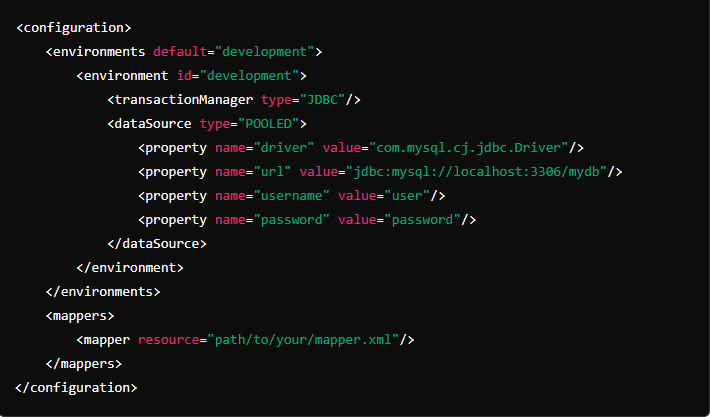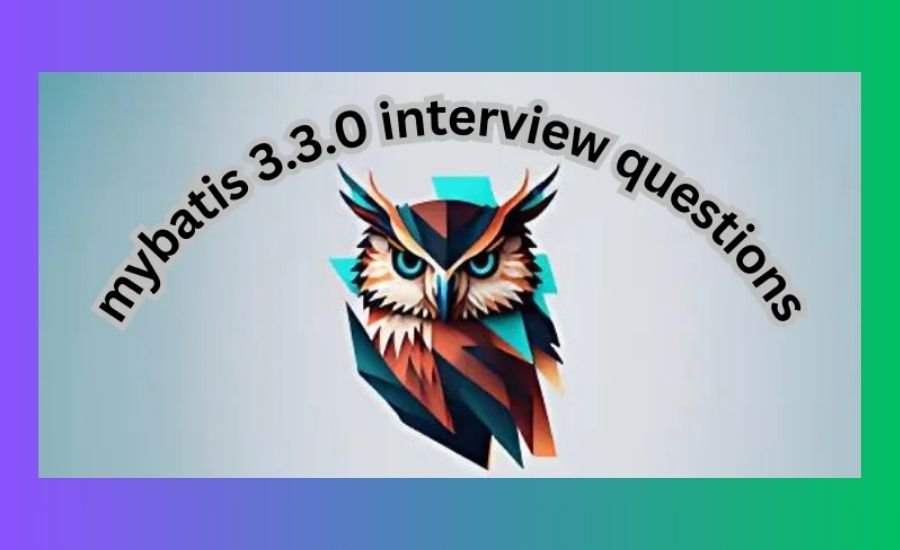Are you preparing for an interview that involves MyBatis 3.3.0? If so, you’re in the right place! In this blog post on Streamest, we will dive deep into some of the most common interview questions related to MyBatis 3.3.0. We will explore everything from basic concepts to advanced features, helping you to confidently navigate your next interview. Let’s get started!
What is MyBatis 3.3.0? Understanding the Basics
MyBatis 3.3.0 is a popular open-source framework used in Java for database access. Unlike other frameworks, MyBatis focuses on SQL and provides a simple way to map SQL statements to Java objects. This makes it a favorite among developers who prefer writing their own SQL queries.
- Lightweight and Flexible: MyBatis is lightweight, meaning it doesn’t add much overhead to your application. You can easily integrate it with your existing projects without significant changes.
- Decoupled SQL Statements: One of the key features of MyBatis is that it separates SQL statements from your application code. This makes your code cleaner and easier to maintain.
- Support for Custom SQL: You can use your SQL statements, which gives you full control over your queries. This is great for complex database operations that require precise handling.
In interviews, you might be asked to explain these core concepts. Be prepared to discuss how MyBatis can be beneficial in specific situations.
Common MyBatis 3.3.0 Interview Questions
1. What are the key components of MyBatis?
In MyBatis, several key components work together to execute SQL and map the results to Java objects. These include:
- Configuration File: This XML file contains all the settings and mappings for your SQL statements.
- SQL Session Factory: It creates SQL sessions, which are used to interact with the database.
- Mapper Interfaces: These are Java interfaces that define methods for executing SQL statements.
Understanding these components will help you answer questions about how MyBatis operates. Be ready to explain how each component contributes to the overall functionality of MyBatis.
2. How do you configure MyBatis 3.3.0?
Configuring MyBatis involves several steps:
- Create the Configuration File: Define your database connection details and the mapper XML files in an XML configuration file.
- Initialize the SQL Session Factory: Use the configuration file to create an instance of the SqlSessionFactory.
- Get a SQL Session: Obtain a SqlSession from the SqlSessionFactory to interact with the database.
Here’s a simple example of what your configuration file might look like:

Familiarize yourself with this configuration as interviewers may ask for specifics about setting it up.
3. Can you explain the Mapper Interface in MyBatis?
The Mapper Interface in MyBatis is a crucial part of the framework. It allows you to define methods that correspond to SQL statements in your XML configuration or annotations.
- Method Naming: MyBatis automatically maps the method names to SQL statements. For example, if you have a method named selectUser, MyBatis will look for a corresponding SQL statement in your XML file with the same name.
- Parameter Handling: You can pass parameters to your methods, making it easy to execute dynamic queries.
- Result Mapping: The results from your SQL queries can be mapped to Java objects, allowing for seamless integration between your database and application code.
Understanding how the Mapper Interface works can set you apart in an interview. Be ready to provide examples of how you’ve used it in your projects.
4. What are the advantages of using MyBatis over Hibernate?
Many developers choose MyBatis for its straightforward approach to SQL. Here are some advantages:
- SQL Control: MyBatis allows full control over the SQL queries you write, unlike Hibernate, which uses its query language (HQL). This can be beneficial for complex queries where precision is needed.
- Performance: Since MyBatis allows for direct SQL usage, it can lead to better performance in certain scenarios where complex ORM mappings are not needed.
- Easier Debugging: When using MyBatis, it’s often easier to debug SQL issues because you’re directly writing and managing the queries.
Being able to discuss these points can help you make a strong case for your preference for MyBatis during an interview.
Read About: Rachelmerq
Advanced MyBatis 3.3.0 Features to Know
1. Dynamic SQL in MyBatis
Dynamic SQL is a powerful feature in MyBatis that allows you to create SQL statements based on certain conditions. This can help in building flexible queries without hardcoding values.
- If Statements: You can use <if> statements in your SQL to include or exclude conditions based on parameters. For example:

- Choose and When Statements: These tags can help in selecting the appropriate SQL based on various conditions. It’s similar to a switch-case statement in programming.
Understanding how to implement dynamic SQL can be a game-changer in interviews, as many projects require this flexibility.
2. Caching in MyBatis
Caching can significantly improve the performance of your application by reducing the number of database calls. MyBatis supports both first-level and second-level caching.
- First-Level Cache: This is enabled by default and is associated with a SqlSession. It caches objects within the same session.
- Second-Level Cache: This is optional and can be shared across multiple sessions. You need to configure it in your XML configuration file.
Be prepared to discuss how caching works in MyBatis and its benefits during interviews.
3. Handling Transactions in MyBatis
Transactions are essential for ensuring data integrity. In MyBatis, you can manage transactions using the SqlSession.
- Manual Transaction Management: You can manually control transactions using SqlSession methods. For example, you can start, commit, or roll back a transaction as needed.
- Automatic Transactions: If you are using MyBatis with Spring, you can leverage Spring’s transaction management features, making it easier to manage transactions.
Interviewers may ask about your experience with transactions, so understanding both manual and automatic management will be beneficial.
Conclusion: Preparing for Your MyBatis Interview
Preparing for your MyBatis 3.3.0 interview doesn’t have to be overwhelming. By understanding the core concepts, common interview questions, and advanced features, you’ll be well-equipped to handle your interview with confidence.
Remember to practice coding examples and be ready to explain your thought process clearly. The more familiar you are with MyBatis, the more prepared you will be.
FAQs
Q: What is MyBatis 3.3.0?
A: MyBatis 3.3.0 is an open-source framework that simplifies database access by mapping SQL statements to Java objects.
Q: What are Mapper Interfaces?
A: Mapper Interfaces are Java interfaces in MyBatis that define methods for executing SQL statements.
Q: How does caching work in MyBatis?
A: MyBatis supports first-level caching (session-specific) and second-level caching (shared across sessions) to improve performance.
Q: Why choose MyBatis over Hibernate?
A: MyBatis allows for direct SQL usage, giving developers more control and often better performance for complex queries.
Read About Next: Explosion-lh3


